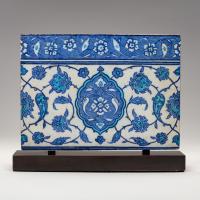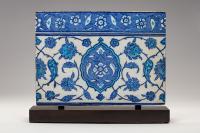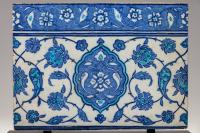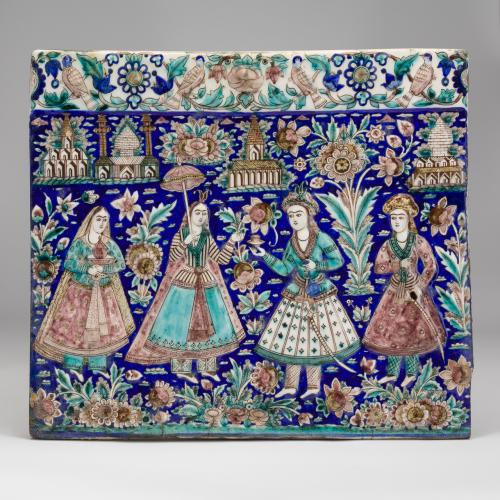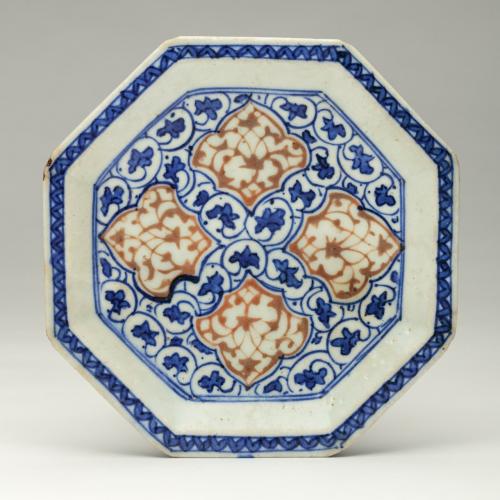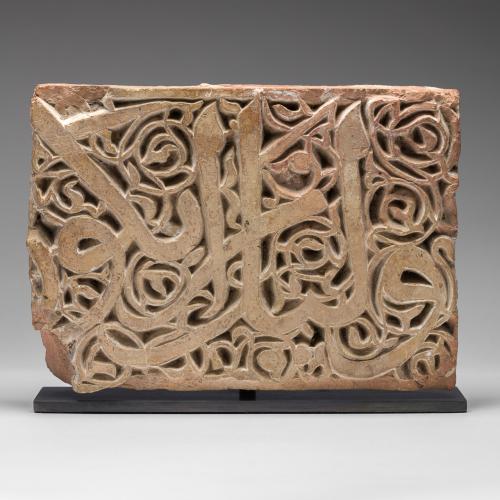

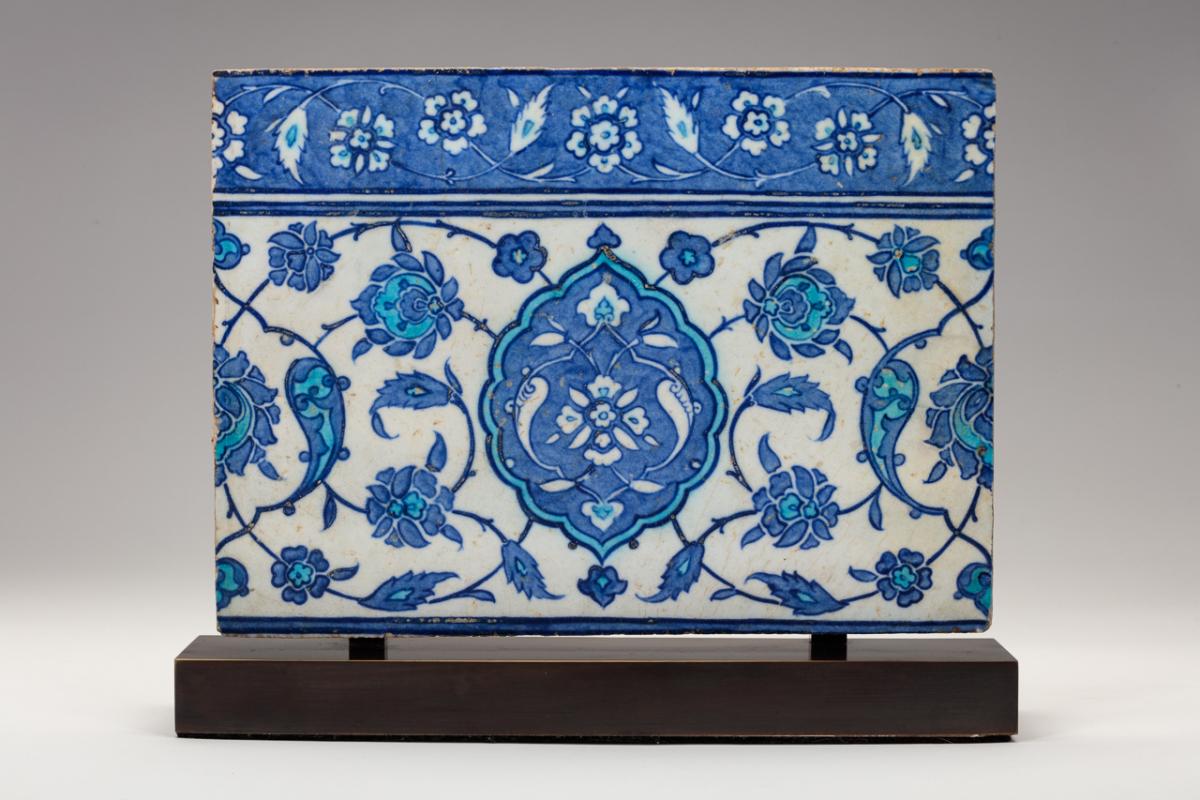
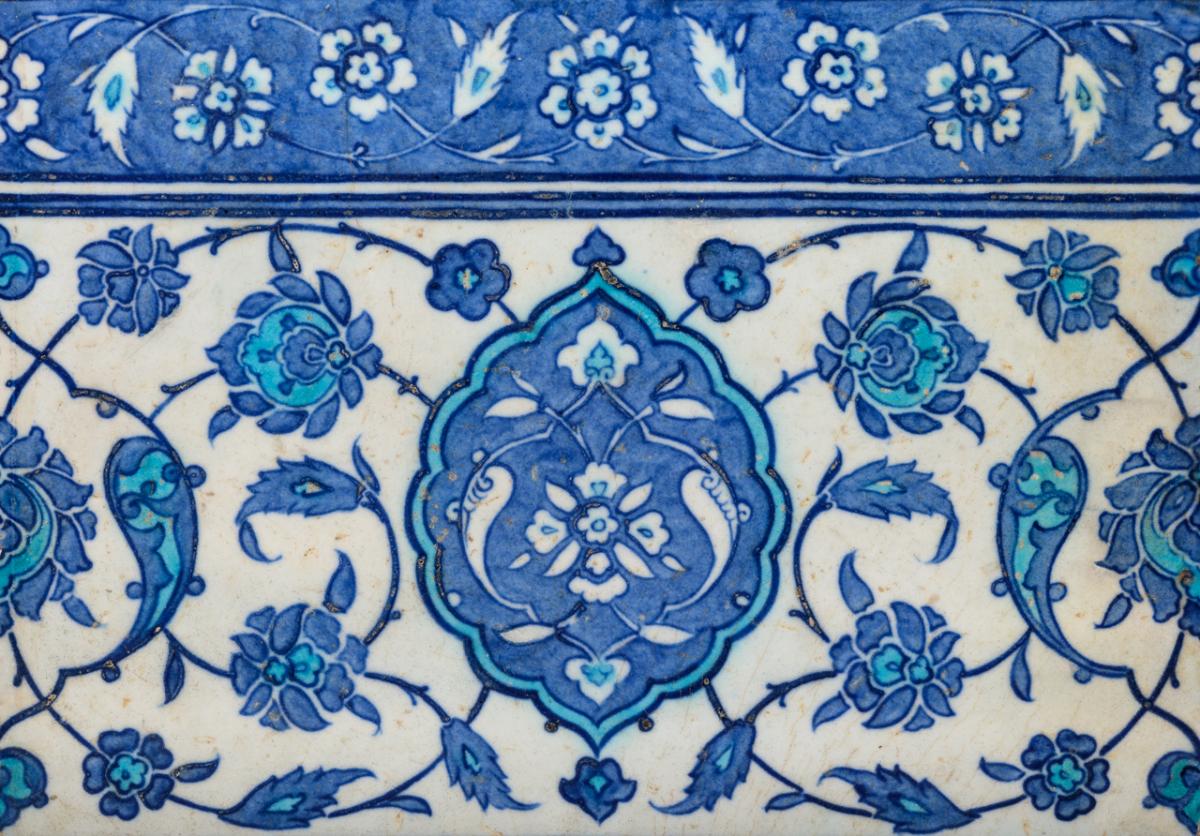
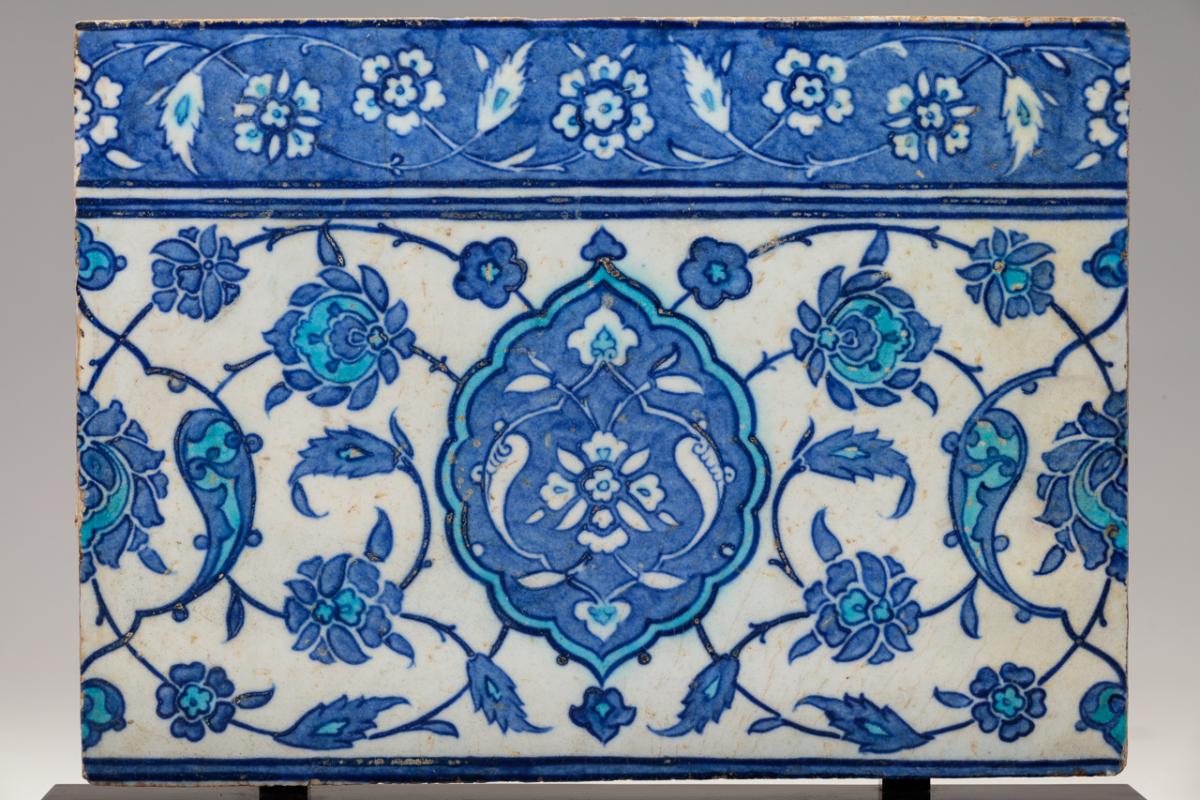
Price on application
This object is eligible for a Certificate of BADA Provenance
The BADA Standard
- Since 1918, BADA has been the leading association for the antiques and fine art trade
- Members are elected for their knowledge, integrity and quality of stock
- Our clients are protected by BADA’s code of conduct
- Our dealers’ membership is reviewed and renewed annually
- Bada.org is a non-profit site: clients deal directly with members and they pay no hidden fees
Iznik, Ottoman Turkey,1540-1550.
Ceramic tile with underglaze decoration.
26.5cm high, 19.6cm wide.
Provenance: European private collection since 1960s.
This fritware tile is painted underglaze in dark and light cobalt blue and turquoise īslīmī patterns, outlined in dark cobalt blue. The top panel has a band of white flower-and-leaf motifs embellished with turquoise dots, while the bottom panel has blue flower-and-leaf motifs strung together by dark blue spiralling branches. The cartouche in the middle of the bottom panel has turquoise outline and light blue background, completed with white flower-and-leaf motifs.
This item was part of the tile revetments that once decorated a bathhouse in the Zeyrek district of Istanbul, which came to be known as the Çinili Hamam (the Tiled Bathhouse). The bathhouse was commissioned by the Ottoman admiral Barbaros Hayreddin Paşa (better known as Barbarossa), the Ottoman empire’s famous naval commander who carried out a series of successful campaigns against the Spanish and their allies in the 1530s-1540s. As a grand admiral (kapudan-ı deryâ), Barbarossa had access to state resources for realising his building projects. For example, he was able to employ the famous court architect Sinan (d.1588) to design the bathhouse, and the tiles used for the building was probably designed by the royal workshop. The bathhouse was sold off in the 19th century, and during restoration work, the remaining tiles were sold to a dealer called Ludvic Lupti, probably in 1874, who sold them in Paris.
Using tile revetment to decorate buildings became fashionable in the mid-16th century for Ottoman elites. The intricate designs of tile patterns were made to emulate manuscript paintings, meant to be savoured from a close distance. Originated from 14th-15th century Iran, the īslīmī pattern used for this tile is one of the oldest decorative schemes for manuscript illuminations. This tile is in the same style as a group of tiles now at the Victoria and Albert Museum, which have all be identified as coming from the Çinili Hamam.
Comparative material:
V&A (221-1896)
Reference:
‘Tile 1540-1550’, Victoria & Albert Museum, 24 June 2009,
Walter B. Denny, Iznik: The Artistry of Ottoman Ceramics (London; New York: Thames & Hudson, 2004), 79.
The BADA Standard
- Since 1918, BADA has been the leading association for the antiques and fine art trade
- Members are elected for their knowledge, integrity and quality of stock
- Our clients are protected by BADA’s code of conduct
- Our dealers’ membership is reviewed and renewed annually
- Bada.org is a non-profit site: clients deal directly with members and they pay no hidden fees


